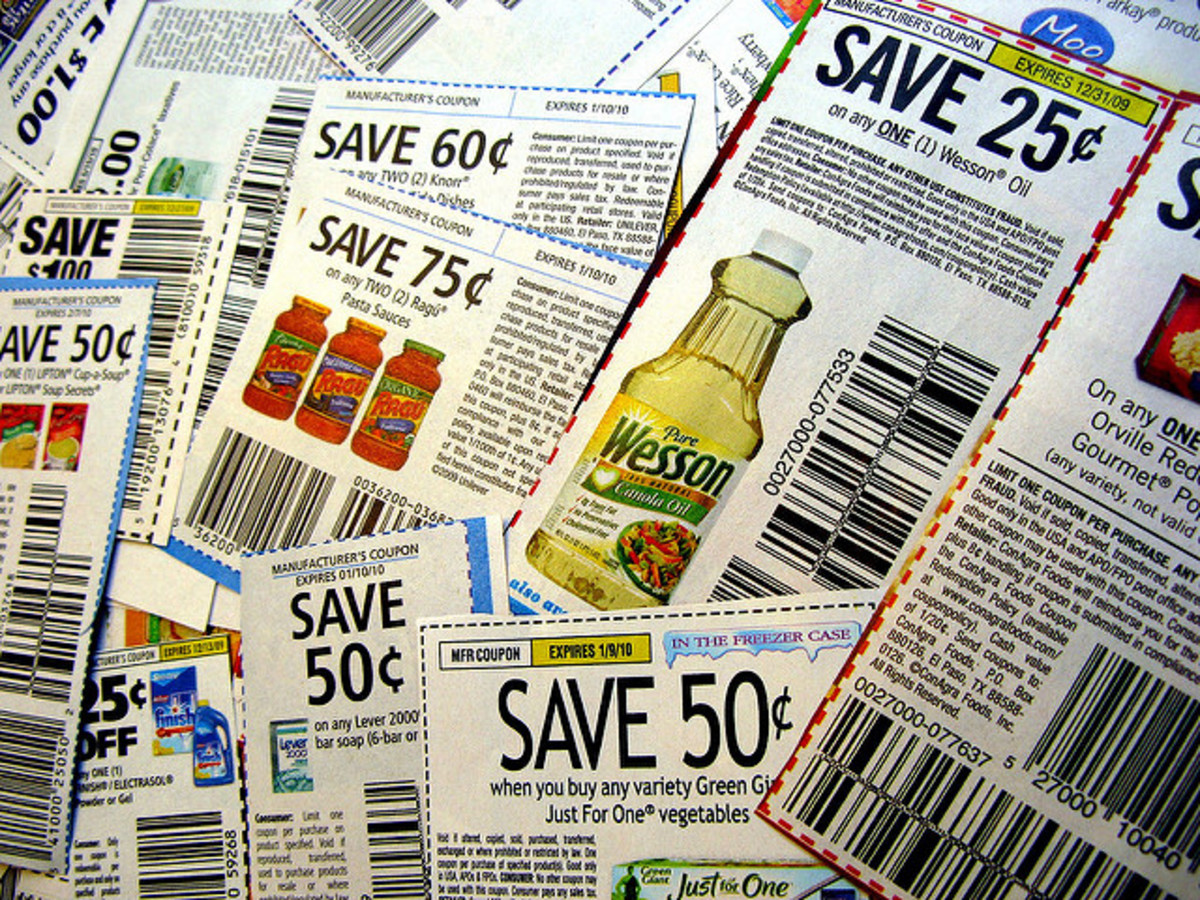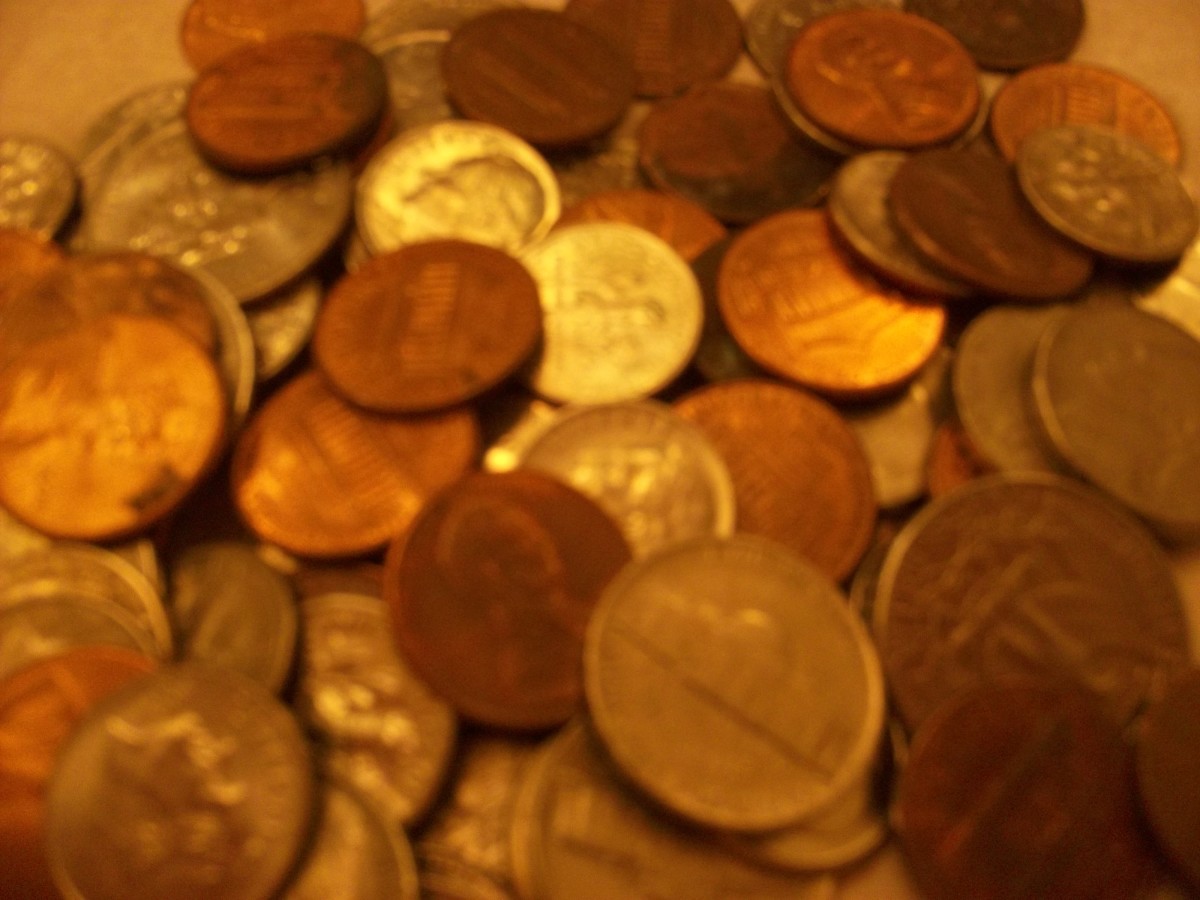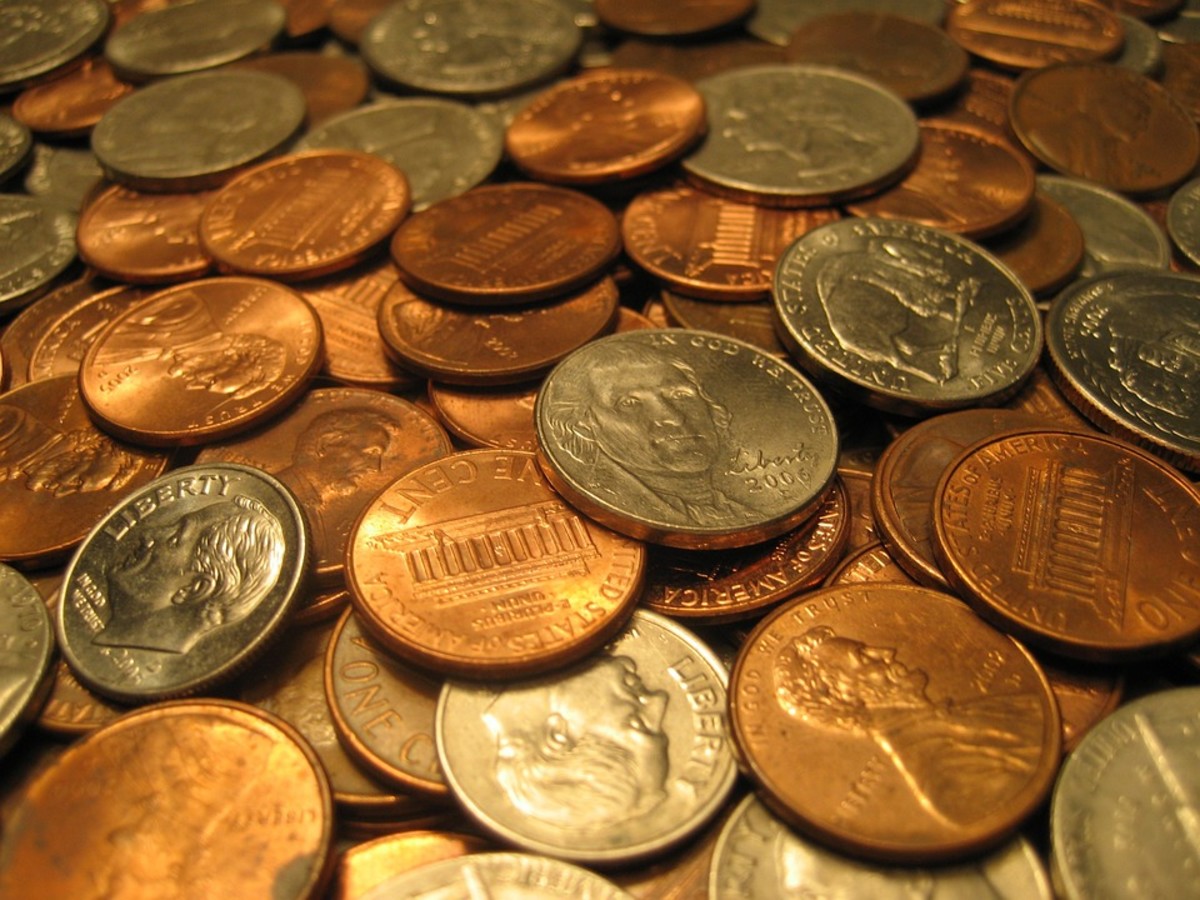Simple Changes that Save You Money - You Can Save $$ without Cutting Back Purchases!

Just sharing my experience
I by no means claim to be a financial expert. Rather, I just want to share simple methods I use to help save money. Whether your motive is the thrill of a good deal, stretching a tight budget, or putting as much money into savings as possible, I think these tips can help most people.

Treating Myself & My Kids at Starbucks
My kids love our weekly run to Starbucks, usually after Taekwondo class on Saturdays. I normally get an venti iced coffee, and the kids smoothies. Occasionally my kids opt for a hot beverage because of the seasonal flavors.
If it's late in the day, and a flavored drink sounds really good to you, opt for a flavored hot cocoa, which save you anywhere from $1 to $2 per cup, depending on the size you select. Super yummy.
If you are buying for kids - select a flavor they can agree on, order a "venti" of whichever beverage you select, and request they split it into either two "grandes" or three "talls", and have them add whip cream to each. I have not encountered any strange looks or refusals for granting my request.
I personally enjoy just a simple ice coffee - which usually runs about $3 for my venti. However, when I want to refrain from caffeine, I've had to order a decaf Americano over ice -- which runs over $5 after tax. Hallelujah for a gal named Jaime who suggested the following to me when I told her I did not want to pay $5 for a decaf iced coffee anymore. After much thinking, she suggest to me, and told me to order exactly like this: "I'd like a 'short pour over decaf' with a venti cup of ice please." This gives me a hot decaf that allows me to dissolve raw sugar or truvia into my beverage, then pour over the ice and add my cream myself. Cost? $1.50. That's a huge savings percentage-wise. For a regular iced coffee venti - 50% savings, and for my decaf (because Starbuck's does not have decaf iced coffee prepared) - a whopping 323% savings. (Before taxes, the decaf Americano venti is $4.85).
Here's the breakdown of changed cost for my Saturday morning Starbuck's run:
Was: 5 x's $3.25 = $16.25, plus $4.85 = $21.10 plus 10% tax = $23.21
Now: 2 x's $4.75 = $9.50, plus $1.50 = $11.00 plus 10% tax = $12.10
Total savings - $11.11 weekly, $44.44 monthly, and $577.72 yearly. WOW! And we're still buying the same product! This does not include savings from the rewards card.
Additional savings can be earned by buying a starbucks rewards card. You simply "charge" the card by transferring money from your bank account to your starbuck's card via a debit/atm transaction. You earn points and free drinks, coupons, etc., each time you use a card that you have registered online. woo woo!

- How To Get Free Grocery Coupons In The Mail
Food companies mail free grocery coupons to consumers who write to them. Save money on your grocery bill with these free grocery coupons
Target Savings
I shop at Target often. I am simply not a big fan of Wal-Mart. Sorry if you work there, nothing personal. I like Target brands better, the stores have a "happier" atmosphere (usually!).
I buy my diapers, meats, produce, milk, much dairy (or Fresh Market) at Target, and a lot of electronics. If you visit Target.com and scroll to the bottom of the home page, you'll find a bunch of menu links in a smaller, grey font. Amongst those links is a "coupong" button ... click it. There you will find a lot of manufacturer coupons (without having to enter your email or get on a "list") as well as Target Web coupons. Target accepts both a manufacturer coupon and a Target coupon per item. I am not a super-coupon woman who indexes my coupons. I simply scroll through the coupons and see if there is anything available for what is on my list. And more times than not, there are. So, I select & print. That simple.
What I did in the last month is get a Target Red Card. It's not a credit card. Well, it can be either a credit or debit. I did not want a credit card. So, I opted for the debit card. You submit a personal check to your cashier, your drivers license, and at some point you enter your social security number into the ATM pad. Within a week, you receive a red card with Target targets all over the front. Use this card instead of your bank debit card. You save 5% on EVERY transaction. The money comes out of your bank account within 5 business days (normally - I've heard sometimes it takes up to 10). There are no hidden fees, no charges. Plus, Target sends you coupons privy only to Target Red Card holders, as well as coupons earmarked by your purchase habits. In other words, as a Kashi cereal buyer, I don't receive coupons for sugar coated, over process rice puffs with marshmallows. :) Pretty cool, I think.
I reasoned - "I spend $200-500 weekly at Target - I may as well save 5%!" What do I do with the savings? Well, I transfer the amount saved in coupons and my 5% discount into a savings account. It's money I would have had to spend anyway, so this is one way to actual put more money aside without increasing my budget. Today, I only made minor purchase, but put $6 into savings. On big shopping days, that amount can be over $25. Shoot, for Thanksgiving, I saved over $55! That adds up quickly.
If I spend a conservative average of $200 weekly at Target, that's $10,400. Just by using my Red Card, that's an automatic $520 in the bank, without changing my purchases. Throw in some coupons - and the number really increases!
- Tips for Saving Money & Paying Off Debt
Collectively, Americans are spending more than they earn - and that is pretty scary. Learning the skills and strategies to save and invest money can improve the quality of your life. I like to apply the...
Water, Please
95% of the time I order water for myself, I do this mainly for health reasons, but when I was tempted to get an iced tea and saw it would be $2.09, I opted out. I now offer my children $2 towards their savings if they will choose water over a beverage, unless the beverage is included in the kids' meal. I'm not a big fan of soda --so much sugar. But, on occasion, we do allow an indulgence.
The other day I took my kids and two of their friends for breakfast. I couldn't make them drink water. Just something about water and an egg that just doesn't mix. Do you know that the beverages cost almost as much as the meals? (Because the kids shared the huge breakfasts). The breakfast total prior to the juices and milks was under $13. After the beverages -- over $20. Ok. I admit it, that's not quite as much as the $13 -- but still, that was a jump. I think my total was $23 and change. Still inexpensive to take 7 kids and myself out to eat -- but... I think you get my point. :)
If our family dines out once weekly, and refrains from spending an average of $2 per beverage per person, that's $14 saved weekly, $56 saved monthly, and $728 yearly!
The Power of Frugal Living
- Family Living on a Budget: How to Live Below Your Means
Successful guidelines on how to keep a healthy financial status for your family - based on my experience. How my family live below our means.
Use Cash
If we don't have the cash to buy something, 99.9% of the time, we won't. Period. We're juggling one vehicle right now as we're attempting to save for another. We may end up financing part of it -- but only if we feel it's an excellent rate and that we'll be able to minimally double the payments to pay it off quickly. Trust me, juggling one van with five kids is not simple. But it can be done. We are self-employed and do not want obligations that we cannot afford should we lose a client, or have slow paying clients. It's happened before, so we're taking precautions for it not to happen again. A few years back, we lost two major clients - one due to corporate decisions out of our franchisee client's control (They had 14 athletic supply stores in three states for which we handled all of their ad campaigns, designs, placement, printing, and marketing plans); the second, a medical company with two branches. When medicare made changes, a lot of their supplying doctor facilities were affected -- and a domino effect occurred -- which hit us. Unfortunately, the loss of these two clients happened within two weeks of each other. The income lost from those two clients was $6,000 monthly. Ouch.
Using cash gives better discounts and buying power when negotiating for big ticket items. Using cash does not incur late fees, interest rates or penalties. I usually use a debit card, admittedly, because it's easier for me to keep up with my transactions that way. :)
Buy Locally when Possible
As much as possible, I buy from locally owned stores. Around here, there simply are not any mom & pop grocers, which is sad to me. However, there is a locally owned mattress manufacturer, vaccuum businesses, and specialty shops. I'd rather pay 10-15% more on these items and know most of my money is being circulated in the local economy.
I recently purchased a mattress from a local, family-owned manufacturer. The quality is outstanding - the warranty - for life. My friends told me about them because their parents have bought fromt them for years, and hence, so do they. They have only incurred one problem in the years they've done business together. The company - at no cost to my friend - picked up the "lemon" mattress and brought a replacement. No hassle, no lengthy forms.
I bought a steam carpet shampooer from a local, three-generation family owned business just two weeks ago. The customer service is outstanding. Plus, if there are any problems with this household name cleaner, I take to the store -- and they handle everything. AND the price was less than at chain stores. (I was surprised and didn't learn the deal I had gotten until AFTER my purchase.) I have since returned to exchange an item my husband didn't want (a smaller vaccuum, he had just gotten a shop vac from his dad as a "thought of you & it was just such a good deal" gift.) The exchange was easy, hassle free. And, they had remembered me from just one transaction two weeks earlier.
During the summer months, I like to purchase my produce from local farmer markets.
How does this save me money? This is an investment in our local economy's future -- just as buying as much "Made in the US" or ally country products as possible is an investment in our country's economy (I'll not get on my soapbox, for now). I am not being rude, but I do refrain from purchasing merchandise made in a country with unfair trade and "employment" practices. This personal conviction has presented challenges -- and sometimes I have to buy a product simply because I cannot find one made in the US or an alliance.
Family Nights/Kids Nights
Most restaurants offer a family or kids night, where kids eat for FREE! Check your local franchises, because kids' nights may differ at each locale. Places we choose include:
Moes - Monday nights, two free kids meals per adult purchase $5 or more. This is a super deal. The food is fresh & real. I can feed my kids, hubby & self (& usually have leftovers for lunch) for about $25. Without cooking, without dishes -- there's the whole point. This also includes a large bowl of queso. Pretty spiffy, if you ask me. Don't forget, I have five kids -- so that's a LOT of people fed!
IHOP - kids eat free everyday from 4-8 pm, at most locations. I stick to the breakfast menu at IHOP. I have not researched their food quality, and figure, "How can you mess up pancakes and eggs?" (Don't answer that!) One free kids meal per adult meal purchased. Does not include beverage.
Steak-n-Shake - I do NOT like Steak-N-Shake. I feel sick every time I eat a meal there. But, for those of you with iron tummies - you may want to remember that kids eat free every weekend! One kids meal per adult meal.
If I think of more, I'll come back and add them. If you know of any other deals, please, feel free to tell me in the comment section! :) For now, I'll give a conservative estimate of $4 saved per kids meal (usually only 4 kids meals because, as I mentioned, my eldest usually orders an adult meal). That's $16 weekly, or $64 monthly, or $832 yearly. Even if you only have two children, $416 savings ain't too shabby - just by switching the night you go out to eat!
How Do You Save Money?
- international Money Saving Tips
travel article, tips travelers, make your moneystretch traveling abroad, save money traveling
Be sure to set aside your savings
If you are able to afford to calculate your savings, consider it money you would have spent and invest it in a savings account. These small changes can literally add up to a couple of thousand of dollars a year. That can be a vacation, a mortgage payment, investment money, etc! Just be sure to do it. And if you can only put some aside, that's okay. Or, none because of a tight budget -- you still have the satisfaction of knowing you saved! :)
Now, go stimulate the economy -- Happy shopping!
Did you like this hub?
I hope you enjoyed reading my hub and that it provides useful information to you. I welcome comments - whether you agree or disagree with my viewpoint(s)! Please share your thought either by voting up or down, selecting any appropriate "accolades" (useful, beautiful, awesome, funny), or leaving a comment below.
If you have authored a blog or hub relating to any of my hubs, feel free to paste a link in the comment box. I like networking and believe it's mutually beneficial.
Thank you again for reading!
P.S.
Friday, December 10th -- I just bought 4 Narnia 3D tix, $50 restaurant gift certificate, and 4 bags of gourmet coffee for $43.39 ... Total value? $130.56. :)








